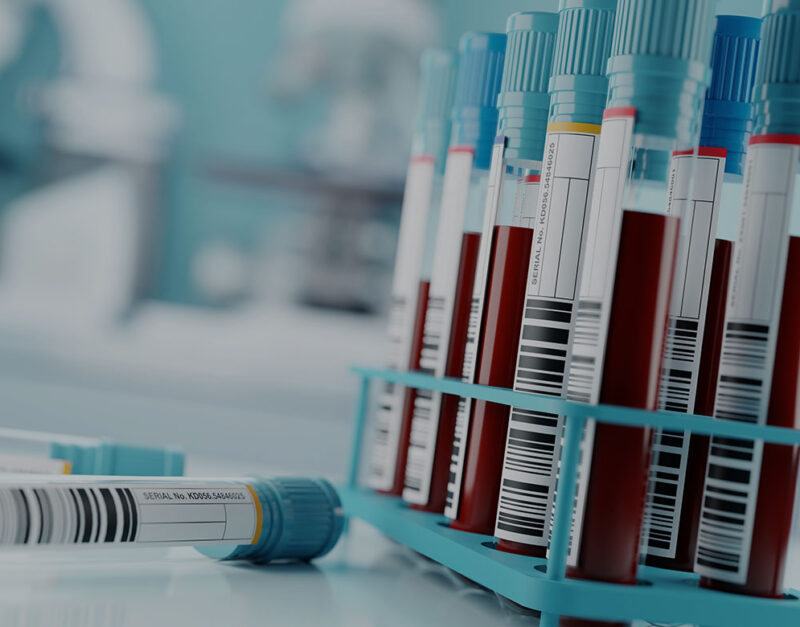 July 6, 2023
July 6, 2023 The German Environmental Specimen Bank (ESB) outside Münster, Germany, overseen by the German Environment Agency, is “an archive for samples that can be used to document and assess the quality of the environment . . . and are collected regularly, to be able to monitor changes of pollution over the course of time.”
Dominik Lermen, a scientist at the Fraunhofer Institute for Biomedical Engineering in Sulzbach, Germany, who supervises the team that collects the stored human samples, said that the ESB contains “about 400,000 samples from more than 17,000 people. Mostly whole blood, urine, and plasma.”
A Record of Toxic Chemical Exposure
The objective of the ESB is to analyze human exposure to toxic chemicals like lead, mercury, and phthalates (“plasticizers”) over time. Founded in 1985 after a successful pilot project that began in 1979, the ESB is “the best and longest record of its kind.”
Samples are taken exclusively from German students 20 to 29 years old. There are two reasons to limit samples to this group. This demographic has probably not had on-job exposure to chemicals and is young enough that the chemicals accumulated over time in the body will be at a normally low level. Scientists at the ESB would closely examine any chemical that appeared at a high level in this population.
“In a sense, students are our early warning system,” said Marike Kolossa-Gehring, the lead scientist and project manager of the ESB at the German Environment Agency.
What Toxic Chemicals Does the ESB Track?
Human samples are collected throughout Germany so scientists can see how toxic chemical exposure affects the entire population.
But humans aren’t the only subjects of study. Plants, soil, worms, and eggs are among the many samples gathered from a variety of ecosystems, including farms, industrial areas, and nature reserves. Unfortunately, these environmental samples are not preserved in the highly secure Münster facility.
In 2012, the human samples were moved from their original storage place at the University of Münster to a former army medical depot outside the city. The sturdy concrete walls of the bunker, which can “withstand a bomb or a plane crash, also shield the samples from cosmic radiation that might otherwise degrade them over the very long term.”
Inside the bunker, samples rest safely in cryo-storage tanks filled with liquid nitrogen.
Keeping these samples intact is vital to the success of the ESB, which has two goals:
- to discover which toxic chemicals are already dangerously high in humans throughout Germany; and
- to confirm whether regulations of those toxic chemicals are effective.
What Does All This Data Show About Toxic Chemical Exposure?
According to a National Geographic article, there is good and bad news regarding toxic chemical exposure from the data.
Mercury levels in blood and urine fell by 57 percent and 86 percent, respectively, between 1995 and 2018, possibly because of the “decreasing use of amalgam in dentistry and probably the awareness of mercury exposure from fish and seafood.”
Blood levels of lead decreased by about 87 percent between 1981 and 2019, mainly because “Germany’s ban on leaded gasoline took effect in 1988, and so car exhaust no longer pollutes the air with lead.”
But some toxic chemicals just won’t go away. PFAS — found in items like flame-retardants, waterproof clothing, and food packaging — take so long to break down that they are known as “forever chemicals.”
According to National Geographic, “traces of these and other substances such as phthalates, which are used as solvents and as plasticizers, have been found in literally every sample since the ESB began looking for them.” Ominously, “the chemicals are omnipresent, and it is impossible to trace their source reliably. That is why regulating their use is extremely important.”
Data from the ESB indicate that exposure to phthalates used to make plastic has increased.
“This clearly indicates that the number of substitute chemicals keeps rising—and we don’t know a lot about their effects yet,” said Kolossa-Gehring.
How We Help Victims of Pesticide Exposure
Seek justice with the help of our experienced lawyers. Our Dallas, Texas, pesticide law firm has battled corporate giants on behalf of individuals like you for 20 years, aggressively fighting to hold them responsible for dangerous chemicals and the birth defects and personal injuries they cause. If you have a child with birth defects caused by dangerous products, we can help.


